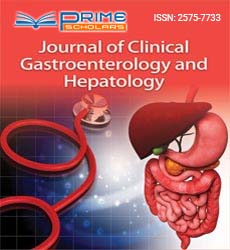Commentary - (2024) Volume 8, Issue 3
Understanding the Esophagus: Anatomy, Function, and Disorders
Aana Wilson*
Department of Gastrohepatology, Yale University, USA
*Correspondence:
Aana Wilson,
Department of Gastrohepatology, Yale University,
USA,
Email:
Received: 29-May-2024, Manuscript No. IPJCGH-24-20563;
Editor assigned: 31-May-2024, Pre QC No. IPJCGH-24-20563 (PQ);
Reviewed: 14-Jun-2024, QC No. IPJCGH-24-20563;
Revised: 19-Jun-2024, Manuscript No. IPJCGH-24-20563 (R);
Published:
26-Jun-2024, DOI: 10.36648/2575-7733.8.3.23
Description
The esophagus is a crucial part of the digestive system,
responsible for the transportation of food from the mouth to
the stomach. While its function may seem straightforward,
the anatomy and complexities of this muscular tube play a
significant role in ensuring efficient digestion and preventing
various disorders. The esophagus is a muscular tube
approximately centimeters long in adults, extending from the
pharynx to the stomach. It traverses the posterior mediastinum
of the thorax and penetrates the diaphragm before connecting
to the cardiac region of the stomach. Structurally, it consists of
several layers. The innermost layer, consisting of epithelial cells,
secretes mucus to facilitate smooth passage of food. This layer
contains blood vessels, nerves, and glands that secrete mucus
and enzymes inner circular and outer longitudinal muscle
layers, it contracts in a coordinated manner to propel food
downward through peristalsis the outermost connective tissue
layer that anchors the esophagus to surrounding structures.
The primary function of the esophagus is to transport food and
liquids from the mouth to the stomach, where further digestion
can occur. This process involves a series of coordinated muscle
contractions known as peristalsis. When food is swallowed,
it passes through the esophagus via peristaltic waves, which
are rhythmic contractions of the muscular walls. Importantly,
this movement is involuntary and continues even when a
person is upside down. Additionally, the esophagus serves as a
protective barrier against gastric reflux. The lower esophageal
sphincter a muscular valve at the junction of the esophagus
and stomach, normally remains closed to prevent the backflow
of stomach contents into the esophagus. Dysfunction of
the can lead to gastroesophageal reflux disease a condition
characterized by heartburn, regurgitation, and potentially
serious complications such as esophagitis and Barrett’s
esophagus. Occurs when the relaxes abnormally or weakens,
allowing stomach acid to flow back into the esophagus. Chronic
can lead to inflammation, ulceration, and scarring of the
esophageal linin although relatively rare compared to other
gastrointestinal cancers, esophageal cancer can develop in the
cells lining the esophagus. Risk factors include smoking, heavy
alcohol consumption, obesity, and chronic. Narrowing of the
esophagus due to scar tissue formation, often resulting from
chronic inflammation radiation therapy, or ingestion of caustic
substances. Symptoms include difficulty swallowing, chest
pain, and regurgitation. A rare disorder characterized by the
inability of the lower esophageal sphincter to relax properly,
leading to difficulty swallowing, chest pain, and regurgitation.
It results from degeneration of the nerves controlling
esophageal muscle contractions. The esophagus plays a
vital role in the digestive process, facilitating the passage of
food from the mouth to the stomach through coordinated
muscular contractions. Understanding its anatomy, function,
and common disorders is essential for maintaining digestive
health and preventing complications. By recognizing the signs
and symptoms of esophageal disorders, individuals can seek
timely medical intervention and adopt lifestyle modifications
to promote optimal esophageal function and overall wellbeing.
The esophagus, a seemingly simple conduit for food,
is a marvel of physiological engineering. Its intricate anatomy
and precisely coordinated muscular actions ensure efficient
transport of ingested material from the mouth to the stomach.
However, disruptions in this delicate balance can lead to a
range of disorders that impact digestion and overall health.
Acknowledgement
None.
Conflict Of Interest
The authors declare that they have no conflict of interest.
Citation: Wilson A (2024) Understanding the Esophagus: Anatomy, Function, and Disorders. J Clin Gastroenterol Hepatol. 8:23.
Copyright: © 2024 Wilson A. This is an open-access article distributed under the terms of the Creative Commons Attribution
License, which permits unrestricted use, distribution, and reproduction in any medium, provided the original author and source
are credited.

